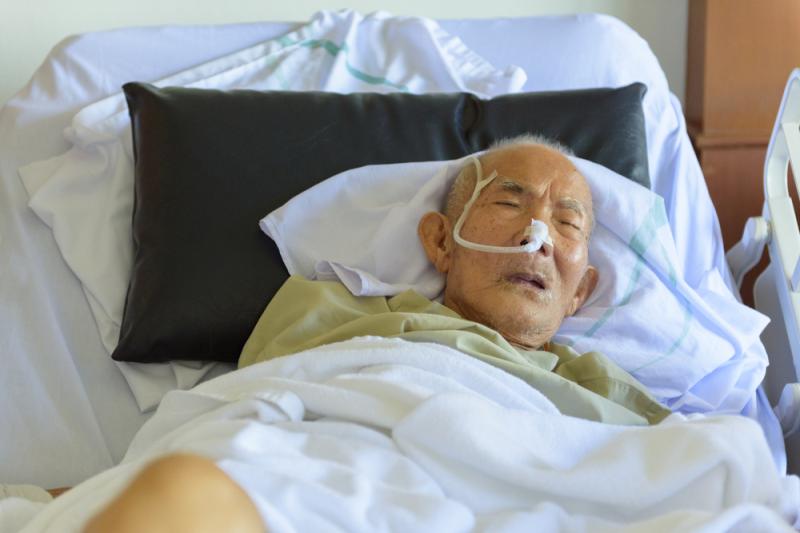Malnutrition prevalent in elderly COVID-19 patients





Malnutrition is common among elderly patients with coronavirus disease 2019 (COVID-19), according to a recent China study.
“In order to scientifically evaluate the nutritional status of elderly patients with COVID-19, we conducted the cross-sectional study,” researchers said. “To our knowledge, this is the first study to evaluate the state of nutrition in elderly patients with COVID-19.”
In the 182 enrolled patients (mean age, 68.5±8.8 years; 117 females), the average score in the Mini Nutritional Assessment (MNA) was 22.9±2.8, indicating a risk of malnutrition. Because cheese is rarely consumed among Chinese, the related item was replaced by consumption of soymilk and peanut milk. Other MNA items remained unchanged. [Eur J Clin Nutr 2020;74:871-875]
More than half (52.7 percent; n=96) of the patients were malnourished, scoring <17 points in the MNA. On the other hand, 27.5 percent (n=50) were at risk of malnutrition, with MNA scores falling between 17 and 23.5 points. Only 36 participants were of good nutrition status.
Diabetes mellitus was found to be significantly more common among malnourished participants, as opposed to those who were just at risk of malnutrition and not malnourished (35.4 percent vs 22.0 percent and 16.7 percent; p=0.015). Body mass index was also different across groups (21.1±3.6 vs 23.3±3.4 and 25.6±3.0 kg/m2, respectively; p=0.035).
The researchers also found significant differences between subgroups in terms of calf circumference (p=0.047), albumin, haemoglobin, and lymphocyte counts (p<0.001 for all three).
In contrast, basic demography was comparable among subgroups, including age and sex. The same was true for other comorbidities such as hypertension, cerebrovascular and cardiovascular diseases, and chronic lung diseases.
Multiple logistic regression analysis confirmed that diabetes mellitus was a significant predictor of malnutrition in elderly adults with COVID-19 (odds ratio [OR], 2.12, 95 percent confidence interval [CI], 1.92–3.21; p=0.006). Other independent correlates included calf circumference (OR, 2.42, 95 percent CI, 2.29–3.53; p=0.027) and albumin levels (OR, 2.98, 95 percent CI, 2.43–5.19; p=0.005).
For COVID-19, “[t]he overall prognosis of elderly patients was worse than that of young and middle-aged patients,” the researchers said. “One reason may be the poor nutritional status of elderly patients.” The present study found older COVID-19 patients suffer from a heavier burden of malnutrition.
There are likely several reasons for this, they added. For example, the inflammatory response triggered by COVID-19 uses up muscle protein and albumin, explaining the findings of the regression in the current study.
Importantly, the present results suggest that “[f]or clinical practice, nutritional support should be strengthened, especially for elderly patients with diabetes mellitus, low calf circumference, or low albumin,” the researchers said.
Important limitations of the study included its single-centre design and the failure to account for other possible confounders, such as lifestyle, physical activity, and social support. Future studies should be designed to address these issues.